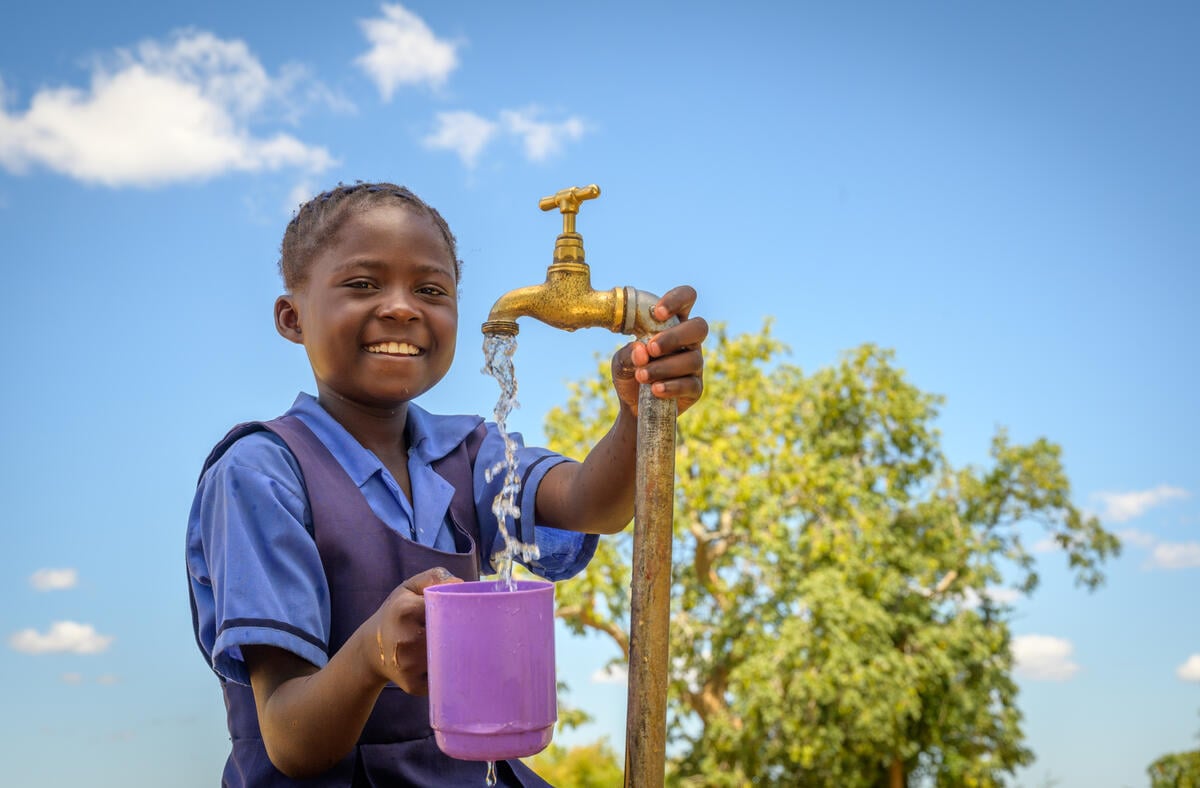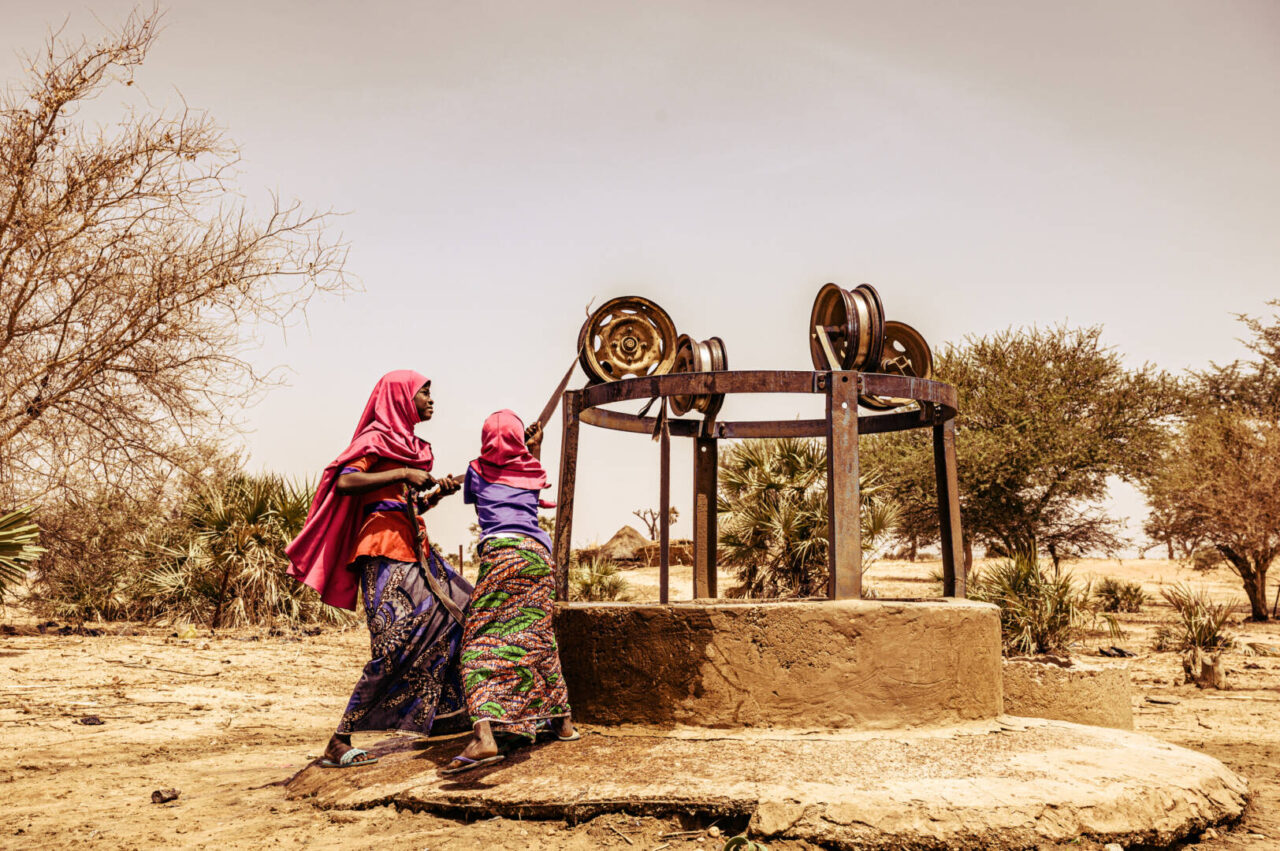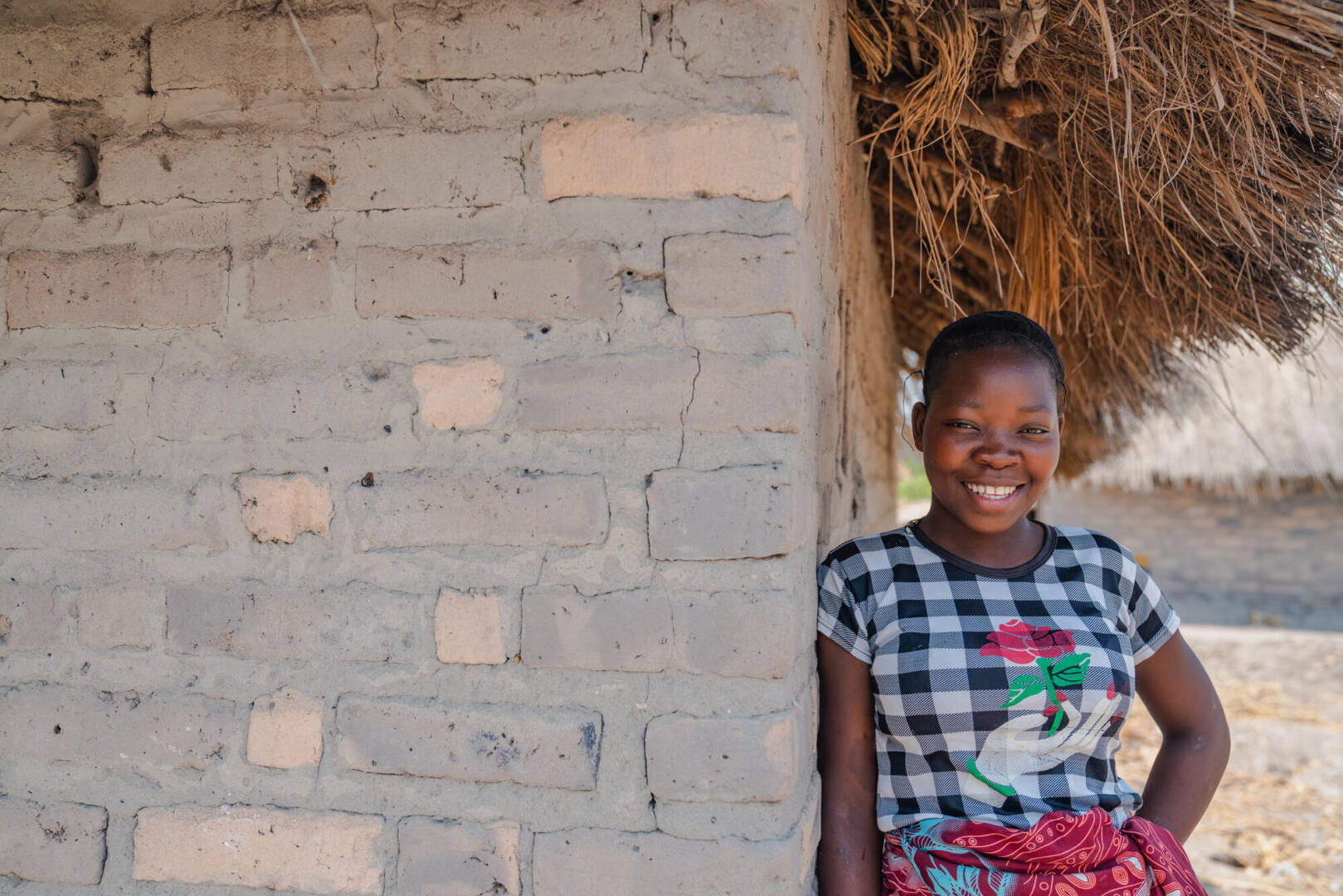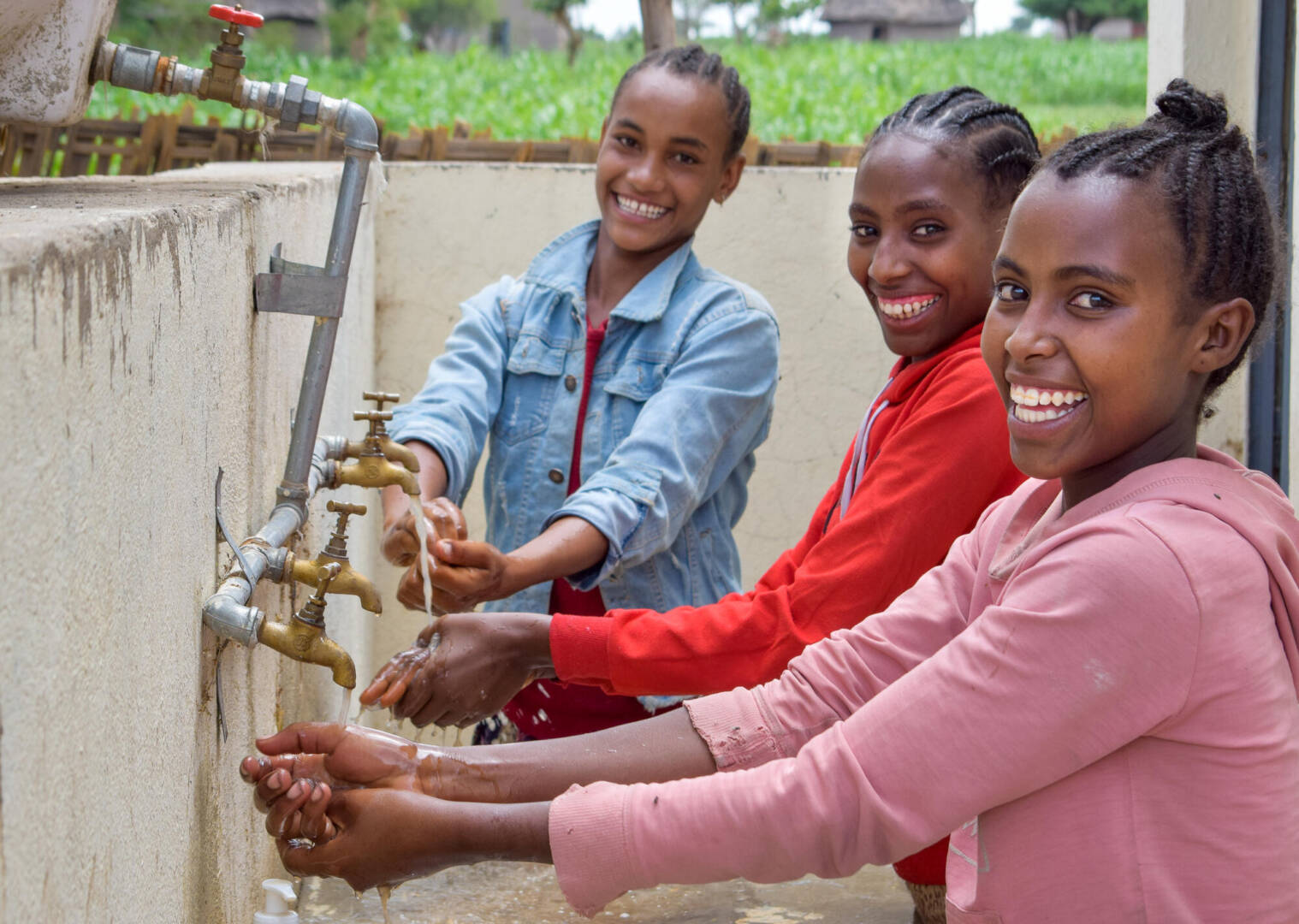Water is the essence of life, yet millions worldwide lack access to the clean water they need for drinking, cooking, bathing, handwashing, and growing food. Despite progress, the global water crisis continues to impact the world’s most vulnerable communities.
While the number of people lacking access to clean water has fallen from 1.1 billion in 2000 to 703 million in 2022, challenges remain. In addition to the importance of having basic access to a clean water source, there are also many opportunities to multiply the benefits of clean water through improved sanitation and hygiene behavior change.
World Water Day, observed annually on March 22, highlights the urgency of addressing the global water crisis.
Global water crisis: Facts, FAQs, and how to help
- Fast facts: Global water crisis
- Water, sanitation, and hygiene matter for children and families
- Why does World Vision combine clean water with good sanitation and hygiene? What is WASH?
- Why do people walk long distances for water instead of settling near to water sources?
- The challenges of digging wells
- Women and girls are most affected by water scarcity
- How much does equipping one person with access to clean water cost?
- World Vision’s water impact
- World Vision goals: 2023–2030
- How can I help end the global water crisis?
- Timeline of World Vision’s water work
- Milestones of the global water crisis
Fast facts: Global water crisis
- 703 million people — 1 in 11 people worldwide — lack access to clean water.
- 2.2 billion people do not have access to safely managed drinking water services.
- Women and girls around the world spend an estimated 250 million hours carrying water every day, walking on average 6 kilometers (about 3.7 miles) daily to haul 44 pounds of water.
- More than 1,000 children under 5 die every day from diseases related to lack of clean water, sanitation, and hygiene (WASH).
- 1.69 billion people live without access to adequate sanitation, and 419 million people still practice open defecation.
- The United Nations Sustainable Development Goal 6 (clean water and sanitation) aims for universal access to clean water and sanitation by 2030.
Every child deserves clean water.
Water, sanitation, and hygiene matter for children and families
Investing in clean water, sanitation, and hygiene behavior change is one of the most effective ways to improve people’s lives and tackle extreme poverty. The benefits include:
- Families becoming healthier: WASH programs work together to powerfully prevent the spread of most illnesses and are one of the most effective ways to reduce child mortality rates.
- Children getting better nourishment: Clean water and good sanitation and hygiene help kids grow taller, stronger, and healthier. They get more nutrition from their food because they’re not sick. Families can use water to irrigate their gardens to grow more nutritious food year-round.
- Children attending and succeeding in school: When children don’t have to walk long distances to get water, they have more time to attend school and more energy to learn. This is especially important for girls, who most often spend their days collecting water for their families instead of focusing on school.
- Family income improving: Families save money on healthcare, and access to clean water helps ensure income-generating activities like agriculture and small businesses.
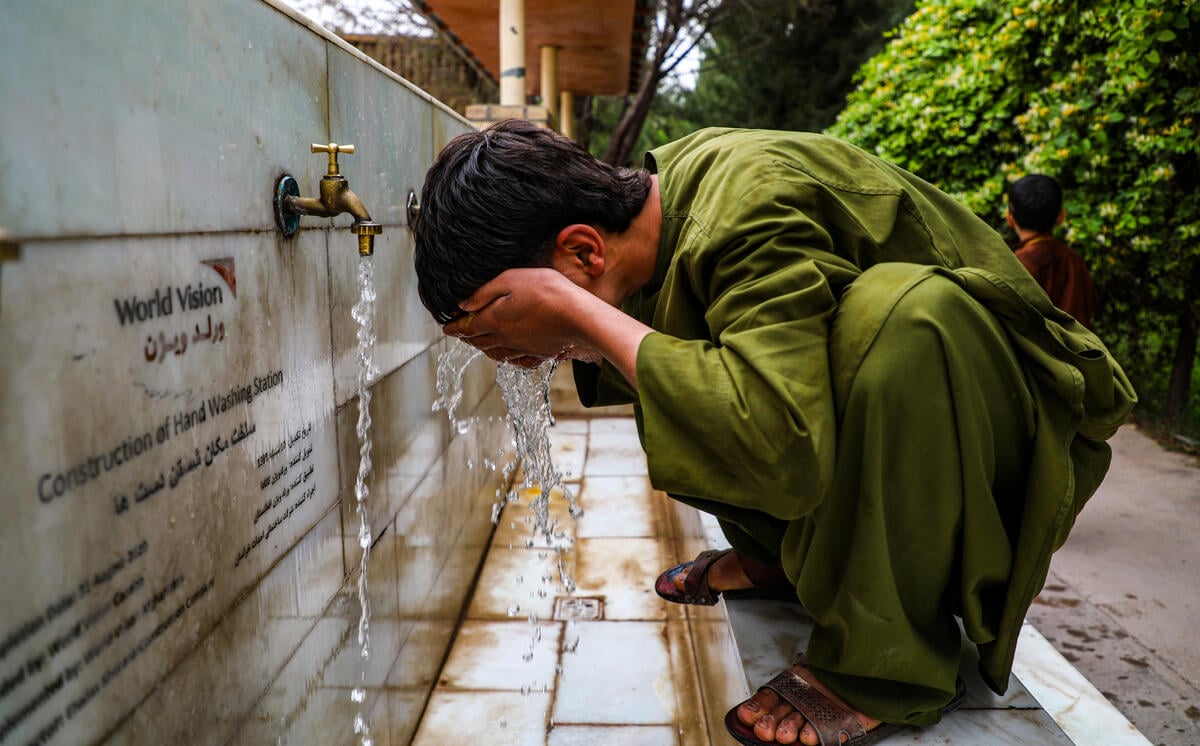
Why does World Vision combine clean water with good sanitation and hygiene? What is WASH?
Beyond clean water, maintaining proper hygiene behavior and sanitation is crucial for overall health. When we support families with hygiene behavior change and sanitation facilities, such as latrines and handwashing stations, it not only enhances the health benefits of clean water but helps prevent the spread of illnesses and diseases. Even simple actions like handwashing can contribute to children growing taller, stronger, and healthier. Facts about water reveal that water, sanitation, and hygiene are so intertwined that they have been combined into one sector known in the global aid community as WASH.
Read how the access to clean water helped transform the lives of Grace and her family in Kenya.
Why do people walk long distances for water instead of settling near to water sources?
Many people served by World Vision are farmers who rely on their crops or livestock to survive. Families are unable to move because it costs too much to start over. In places where there is water scarcity, or where water availability changes with the seasons, some people do have to move many times. The best solution is to make a clean water source close to their homes.
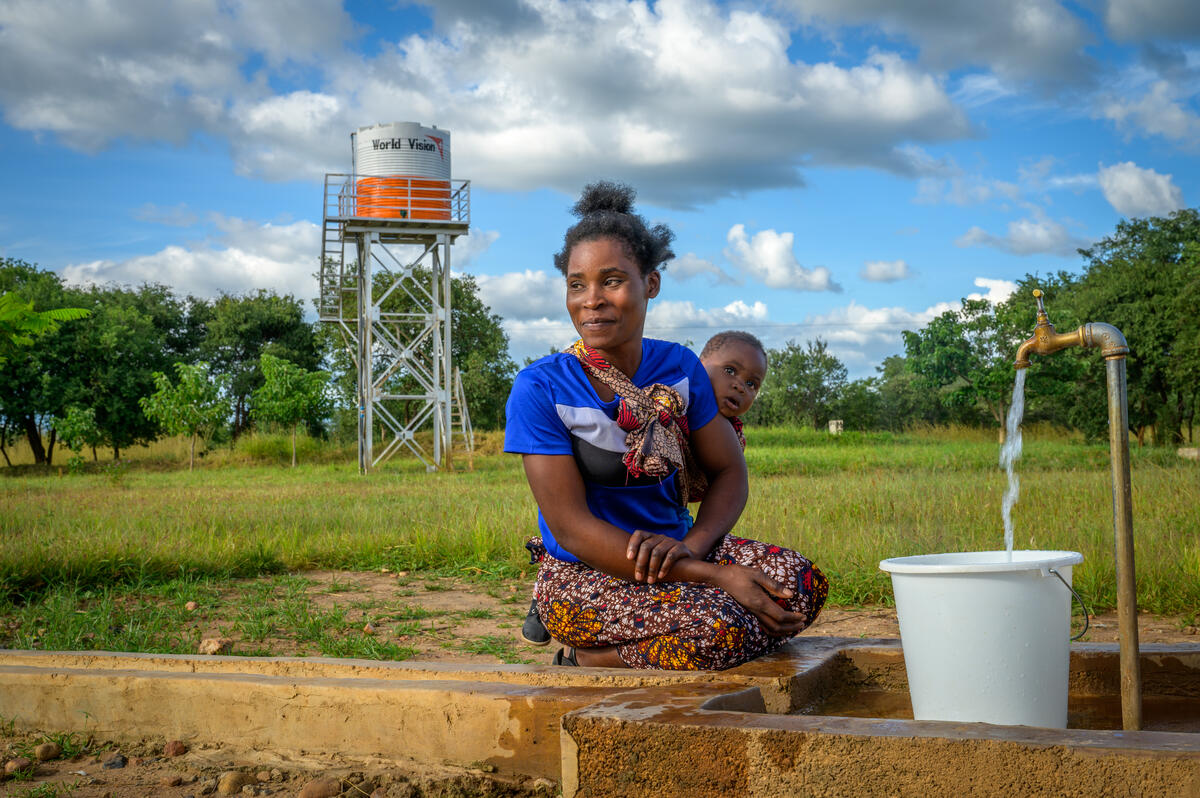
The challenges of digging wells
While some people dig their own shallow wells for groundwater, these open and unprotected wells are often contaminated with bacteria, viruses, and parasites, failing to provide clean water. Even if they’re initially safe, they risk contamination from surface water runoff, particularly in areas where open defecation is common.
World Vision provides protected and permanent water sources using technologies best suited to each context where we work. Water taps are commonly built from piped-water systems, connecting clean sources like drilled boreholes or protected springs to a distribution network. For drilled wells, a borehole area with a cement slab prevents contamination during rainfall. Water undergoes rigorous testing before community access.
Communities are trained to maintain cleanliness around water points and manage systems for continuous water flow. This effort ensures that the community has a lasting and reliable water source.
Women and girls are most affected by water scarcity
Women and girls carry the greatest burden of the global water crisis because they’re most likely to be responsible for hauling water to their homes in the developing world.
- Daily water collection: Women and girls spend an estimated 250 million hours collecting water every day.
- Water access in the developing world: Women and girls walk an average of 6 kilometers — about 3.7 miles — to carry 44 pounds of water every day. This daily task saps their energy for other activities and robs them of the opportunity to spend this time with family or to pursue school and income-generating activities to improve their lives.
- Menstrual health and education: Girls who attend school until adolescence are more likely to drop out when they start menstruating unless their school has clean water, latrines, sanitary supplies, and support for hygiene behavior change. Helping young women to manage menstrual health is not only about providing appropriate facilities, but also addressing social norms.
- Maternal and newborn health: The lack of clean water, sanitation facilities, and proper hygiene contributes to high rates of disease and death among birthing mothers and newborns in the developing world. In areas where World Vision works, half of the health clinics don’t have clean water, and 5 in 6 don’t even have basic handwashing facilities.
World Vision is accelerating our push to ensure health clinics have access to clean water, latrines, and handwashing facilities so moms can have safer deliveries.
As a global leader in partnering with rural health clinics, we’re dedicated to providing 3,000 healthcare facilities with clean water access by 2030. This initiative includes upgrading every health center, everywhere we work in Rwanda, Niger, and Zambia, serving an estimated 2.7 million people.
Read about the burden 12-year-old Faith must carry to care for her family in Mozambique.

How much does equipping one person with access to clean water cost?
The average cost for World Vision to equip one person with access to clean water is $50. This covers the initial access and ensures long-term upkeep of wells and water points for generational impact. And by leveraging other resources, such as child sponsorship and local funds, each person who benefits from clean water is also trained and equipped to practice safe sanitation and hygiene.
World Vision’s impact
World Vision is the leading nongovernmental provider of clean water in the developing world. Our goal is to ensure vulnerable people, including those with disabilities, in disease-burdened rural areas have access to clean water, improved sanitation, and hygiene behavior-change programming. Some key achievements include:
- Reaching one new person every 10 seconds with clean water, and one new person with a handwashing facility as well.
- Supporting 14,175 schools and 4,940 healthcare facilities, and more than 9.4 million households during the COVID-19 pandemic through access to clean water from 2020 to 2022.
- More than 1,200 World Vision WASH professionals and thousands of development professionals live and work in communities worldwide to co-create lasting solutions.
World Vision’s impact is sustained through water sources that continue to flow. With an average investment of 10 to 15 years in a community, we cultivate local ownership and train people to manage and maintain water points. Facts about water sustainability reveal that ongoing maintenance is crucial for ensuring long-term access. To reach our goal of helping end the global water crisis in our lifetimes, we:
- Drill and rehabilitate wells, develop piped-water systems, and create other vital water points
- Teach local community members how to keep water flowing
- Oversee the building of latrines and handwashing facilities
- Promote healthy hygiene practices through behavior change programming
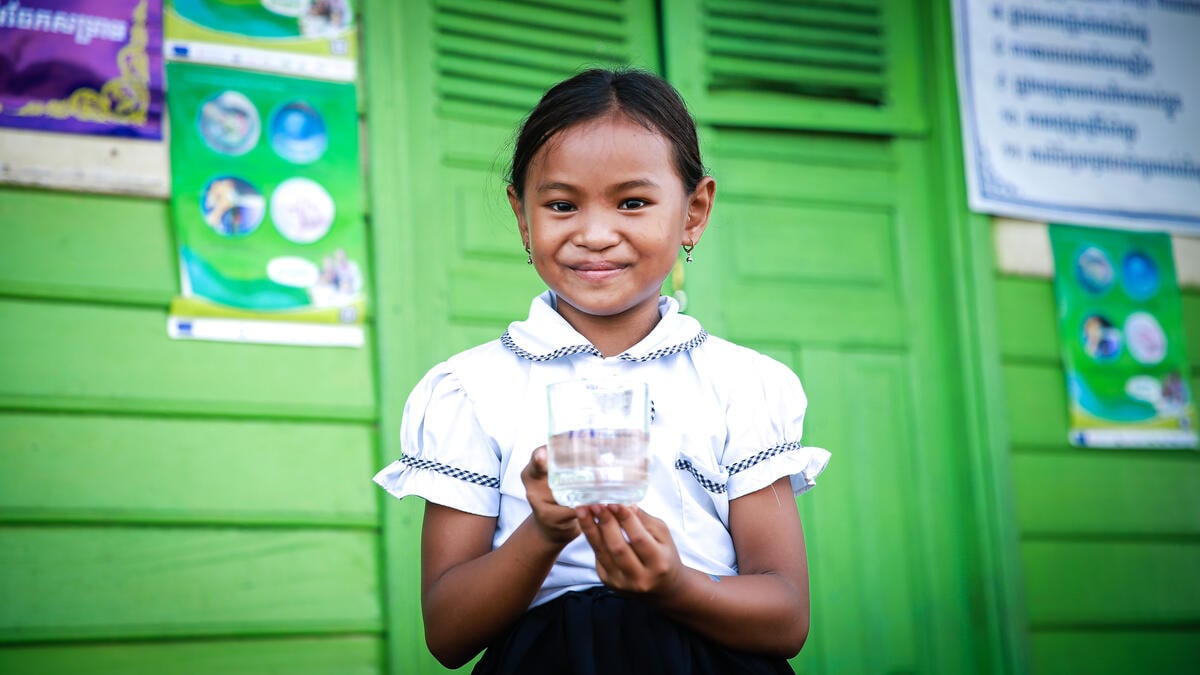
Lisa (shown above) and her family, who live in a floating community in Cambodia, now enjoy access to clean water through the Safe Drinking Water for Cambodia project. In partnership with World Vision and Procter & Gamble (P&G), they use P&G water purifiers to ensure their water is safe for drinking, cooking, and daily use. This program has improved their health and reduced the high costs of buying water.
Before receiving the P&G products, Lisa’s mother said, “… I used water from the lake for cooking and drinking.” She said she didn’t realize the bacteria she was ingesting until they started using the purifier.
Lisa said that she and her friends enjoy clean water and together fill a 10-liter container with water, add one P&G purification sachet, and wait for the 20-minute or so process to work. “I am happy to use P&G purify water products,” she says.
Through this program, 6,015 students in 33 schools and 6,254 households were supported with over 3.96 million P&G water purifier sachets like the one shown above. Also, 2,143 children participated in water and hygiene education programs, and 11 hygiene facilities were built in schools.
World Vision goals: 2023–2030
Together with our donors and partners, we are committed to reaching everyone, everywhere we work with clean water. Between 2023 and 2030, we will reach 30 million people with access to clean water.
Our global WASH program specifically promotes the inclusion of the most vulnerable men, women, and children. It will ensure that people with disabilities, those affected by HIV and AIDS, and other vulnerable groups in each area are actively included and benefit from hygiene messaging and increased access to sustainable clean water and improved sanitation.
We believe through partnering with local governments, communities, and other humanitarian organizations, collectively we can achieve this goal. In 2024, we equipped 3.1 million people with safer, more accessible water, 2.4 million people with household sanitation, and 2.8 million people with household handwashing facilities.
How can I help end the global water crisis?
You can help families in need gain access to clean water by partnering with World Vision. Here’s how:
- Pray: Join us in praying for people in vulnerable communities in need of clean water.
- Give: Help equip children and families with lasting access to clean water.
- Get involved: Walk, run, or roll World Vision’s Global 6K for Water® on May 17, 2025, to empower children worldwide with clean water access. You can also make a long-term commitment to join Team World Vision in the race to empower children and families around the world with clean water.
Read how one grandmother and her granddaughter have raised funds for clean water for over a decade.
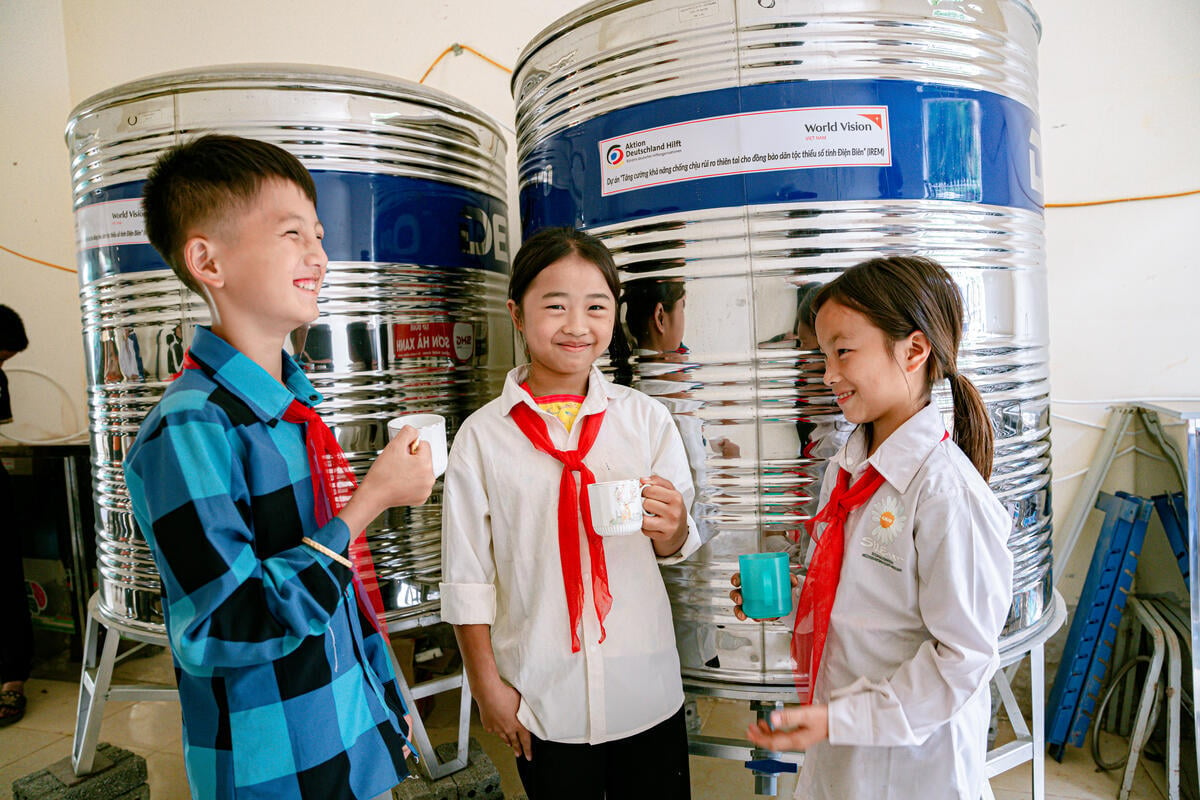
Timeline of World Vision’s water work
1960s: World Vision started small water projects.
Early 1980s: Severe droughts in Africa focused the world’s attention on the urgent need for clean, accessible water.
1985: World Vision began water drilling projects in Ghana.
1990: World Vision increased its commitment to clean water, and the Conrad N. Hilton Foundation partners in the Ghana water effort.
2000s: We scaled up water work.
- 2003: Our West Africa Water Initiative extended drilling into Mali and Niger.
- 2005: West Africa’s 2,000th well was drilled in Ghana.
- 2006: Large-scale water work began in Ethiopia.
- 2009: Large-scale water work began in Zambia, including promoting safe sanitation and hygiene practices.
Read how Max Lucado encountered the realities of dirty water in Ethiopia.
2010s: We expanded our reach and dug deep.
- 2011: World Vision began an intentional scale-up of WASH activities in 10 countries in Africa. The number of people with clean water access increases 20-fold when comparing 2010 to 2016.
- 2012: WASH programming began in Honduras.
- 2013: WASH programs began in India. World Vision and P&G celebrate a partnership that has provided 1 billion liters of purified water, hosting former President Bill Clinton and Chelsea Clinton to see the impact in Rwanda.
- 2014: A University of North Carolina independent study revealed that nearly 80% of World Vision wells in Ghana still functioned at high levels, even after 20 years. The 1,000th productive well was drilled in Mali. In December, the U.S. Congress passed Water for the World Act, prioritizing the provision of clean water and sanitation for the world’s most vulnerable people. World Vision started reaching one person every 30 seconds with clean water.
- 2015: In September, driven by a $40 million gift to our water programs by Dana and Dave Dornsife, World Vision announced plans to reach one new person with clean water every 10 seconds by 2020 — with the vision of achieving universal water access everywhere we work.
- 2016: World Vision expanded our WASH work into more countries in Latin America and the Caribbean, along with the Middle East, reaching 4.6 million new people with clean water.
- 2017: World Vision achieved the milestone of reaching one new person every 10 seconds with clean water. In June, World Vision drilled our 1,500th borehole well in Mali since 2003.
2020s: We set ambitious goals.
- 2020: Amid the global COVID-19 pandemic, World Vision reached our five-year goal of helping 20 million people around the world get lasting access to clean water.
- 2023: We exceeded our goal to make clean water available for everyone, everywhere we work in Rwanda, ultimately reaching over 1.1 million people.
- 2030: World Vision aims to reach 50 million people with access to clean water between 2015 and 2030. As part of this commitment, we reached 25.5 million people between 2016 and 2022.
Milestones of the global water crisis
1700s to 1800s: Industrialization led to increased urbanization in Europe, highlighting the need for clean water supplies and sanitation.
1800s: Water shortages first appeared in historical records.
1854: Dr. John Snow discovered the link between water and the spread of cholera during an outbreak in London.
1866: In the United States, there were 136 public water systems; by the turn of the century, there were 3,000.
1900: Since 1900, more than 11 million people had lost their lives to drought, and more than 2 billion people have been affected.
1972: The U.S. Clean Water Act updated 1948 legislation to control water pollution and funded construction of sewage treatment plants.
1993: The U.N. General Assembly designated March 22 as World Water Day.
2000: The U.N. member states set Millennium Development Goals (MDGs) for development progress, including a 2015 target to halve the number of people without sustainable access to safe drinking water.
2003: UN-Water was founded as a coordinating platform for sanitation and freshwater access issues.
2005: About 35% of the global population experienced chronic water shortages, up from 9% in 1960.
2005 to 2015: U.N. member states prioritized water and sanitation development during the International Decade for Action “Water for Life.”
2008: The U.N.-recognized International Year of Sanitation prioritized health and dignity.
2010: The MDGs’ clean water access target was achieved five years ahead of schedule. More than 2 billion people gained access to safe drinking water since 1990. The U.N. General Assembly recognized the right of each person to have adequate supplies of water for personal and domestic use that were physically accessible, equitably distributed, safe, and affordable.
2013: The U.N. designated November 19 as World Toilet Day to highlight the global issue that billions of people still don’t have access to proper sanitation.
2015: About 2.6 billion people have had access to clean water in the last 25 years, and about 1.4 billion gained access to basic sanitation since 2000. The U.N. member states signed on to the Sustainable Development Goals (SDGs) — successors to the MDGs, that promise clean water and sanitation for all by 2030.
2018: U.N. Secretary-General António Guterres made a global call to action for WASH in all healthcare facilities, citing their crucial role in disease prevention and reduction. Without basic WASH services, health centers could contribute to more infections and preventable deaths for mothers and newborns.
2020: Globally, about 1.8. billion patients and health workers faced a higher risk of COVID-19 infection and other diseases due to the lack of basic water and sanitation facilities at health services, according to WHO and the U.N. Children’s Fund (UNICEF).
2023: Up to an estimated 3 billion people globally faced water shortages. This crisis is set to escalate in the coming decades, particularly in urban areas, without enhanced international cooperation. These findings are from the U.N. World Water Development Report 2023. The report revealed that 2 billion people (26% of the population) lack safe drinking water, while 3.6 billion (46%) lack access to safely managed sanitation.
